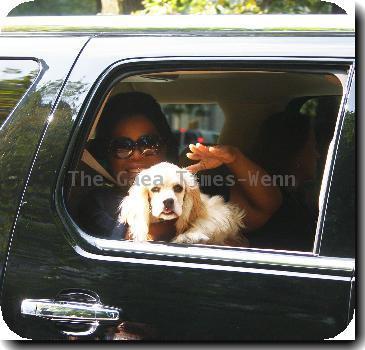Oscar-nominated directors, long a white boy’s club, is an unusually diverse group
By Jake Coyle, APTuesday, February 2, 2010
Diversity reigns in Oscar-nominated directors
NEW YORK — The Academy Awards category for best director has historically been two things: white and male. This year, the five nominees are a slightly more diverse crowd.
Kathryn Bigelow (”The Hurt Locker”) is only the fourth woman to be nominated. If she wins, she’ll be the first woman to ever take home a directing Oscar. Lee Daniels (”Precious: Based on the Novel ‘Push’ by Sapphire”) is only the second black filmmaker to be nominated for best director in the 81-year-history of the Academy Awards. John Singleton, in 1992 for “Boys N the Hood,” was the first.
Bigelow and Daniels would be enough to make the category a fascinating one, but it also bears the intrigue of former spouses being nominated against each other (”Avatar” director James Cameron is Bigelow’s ex-husband), the possibility of the youngest ever best director winner in 32-year-old Jason Reitman (”Up in the Air”) and a quiet, soft-spoken fellow by the name of Quentin Tarantino (”Inglourious Basterds”).
But of those considerations, the most critical one remains the gender and racial barrier-breaking nominations for Daniels and Bigelow.
“I hope someday we can lose the modifier and that becomes a moot point whether the person is male or female and they’re just filmmakers making statements that they believe in,” said Bigelow, who already has won the Directors Guild of America honor for best director.
The DGA boasts that its winner has gone on to win the directing Oscar all but six times since 1948, and more often than not, the film that wins the directing Oscar wins best picture.
Bigelow, 58, follows other women nominees for best director: Lina Wertmuller for “Seven Beauties,” in 1977; Jane Campion for “The Piano,” in 1994; and Sofia Coppola for “Lost in Translation,” in 2003. Campion had a film some thought would be in the Oscar hunt this year: the romantic period piece about poet John Keats, “Bright Star,” whose sole nomination was for costume design.
“Hopefully, this is a time for a woman to actually win and maybe it paves the way for other women,” said Jeremy Renner, who was nominated Tuesday for best actor for “The Hurt Locker.”
“It’s long, long, long overdue,” he remarked.
The same could be said for black directors.
“It’s always the first black something or other,” said Daniels, 50. “It’s so exciting. How can you lose? You can’t lose!”
“Precious” received six nominations in all, including best actress for Gabourey Sidibe and best supporting actress for Mo’Nique, the Golden Globe winner who is widely expected to win. Such Oscar attention is rare for predominantly black films, with rare exceptions being best picture nominees such as “Ray” (2004), “The Color Purple” (1985), “A Soldier’s Story” (1984) and “Sounder” (1972).
Blacks in front of the camera have been quicker — but still unfairly slow — to gain recognition. Fittingly, Sidibe said in an earlier interview that she never much watched the Oscars, but vividly remembers the acceptance speeches of Halle Berry and Jennifer Hudson for acting honors.
As a producer of “The Color Purple,” Quincy Jones was the first black person to be nominated for best picture. That unfortunate distinction has stood until the best picture nominations of “Precious” (whose producers include Daniels, Tyler Perry and Oprah Winfrey) and “The Blind Side,” which was co-produced by Broderick Johnson.
Surprisingly, Spike Lee has never been nominated for best director — only for screenwriting and documentary.
The few nominations of black and female directors not only reflect the academy’s sluggish acknowledgment, but an industrywide problem regarding diversity.
The Directors Guild of America doesn’t break down black directors specifically, but lists only 613 minority members out of its membership of about 13,750. The DGA lists 1,141 female directors among its ranks. The numbers are moving in the right direction, though: That’s about 140 more than there were two-and-a-half years ago.
“There is hard evidence already to show that there are numerous important female directors working today who attribute their decision to get into directing in large part to Kathryn Bigelow and the generation of female directors that she came up with,” said Scott Feinberg, the Oscar analyst whose site, AndTheWinnerIs.blog.com, has gathered reaction from other women directors supporting Bigelow.
If others on the outside are finding inspiration in the diversification of the directing category, those on the inside appear to be, too. Though Oscar races are often frosty and passively competitive, the group has been unusually congenial and supportive. Even the exes have been gracious to each other.
“That’s kind of what’s cool about this group — it’s diverse in every way,” said Reitman. “At the Directors Guild Awards, there was this wonderful feeling that it did not matter who wins this one. They’re all such different films. We’re all so proud of our work and each other.”
Daniels went even further, calling them “a family.”
“It’s really been a great experience for me with them, with James Cameron hugging me and just giving me pep talks, because I’m the new kid on the block, really,” he said. “I can’t tell you how exciting it is. Not just for the nom, but for the camaraderie.”
AP Entertainment Writer Sandy Cohen in Los Angeles contributed to this report.
Tags: 82nd Academy Awards, African-americans, Arts And Entertainment, Award Shows, Celebrity, Events, Halle Berry, Movies, New York, Oprah winfrey, Quentin Tarantino, Tyler Perry

